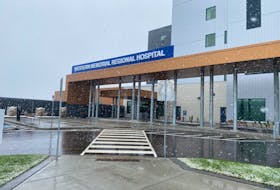Mayor Charles Pender took part in the tour and shared what happened and what was learned through it:
Who went
The mayor
City manager
Director of engineering
Manager of engineering
Two engineering techs
When
Nov. 8-10, 2016
Where they went
Eastern Passage Wastewater Treatment Plant (Halifax)
Colchester Regional Wastewater Treatment Plant (Truro)
Eastern Wastewater Treatment Plant (Saint John)
Lancaster Wastewater Treatment Plant (Saint John)
Mill Cove Wastewater Treatment Plant (Halifax)
What was seen/learned
Pender said the tour allowed those involved to understand how various wastewater treatment systems work and the different steps in the process — things like odour control, which will be big for the city, with the plan for the city’s treatment plant to be constructed on the waterfront.
It also gave them an idea of the costs involved and the impacts the type of equipment purchased can have on cost. High-end pieces of equipment, such as blowers, use less energy, saving money in the long run, but cost more up front.
They also had the opportunity to talk to operators to find out how many people work in the facilities and to get an idea of the operating costs. Even though they were all different types of facilities their yearly operating costs came in at about $1.5 million.
What the city took away
“It’s not as challenging to do it as we thought it might be in terms of the technology,” Pender said.
“The only thing, really, that can make a difference in your operating (cost) is investment upfront in higher-end, or middle-range or lower-end processing equipment.”
Pender said the group left thinking that the city would go with a design-build for the treatment plant, but after looking at the options out there concluded it’s probably better to go with a bid-build.
“We know the type of system that’s going to work for us.”
Mayor Charles Pender took part in the tour and shared what happened and what was learned through it:
Who went
The mayor
City manager
Director of engineering
Manager of engineering
Two engineering techs
When
Nov. 8-10, 2016
Where they went
Eastern Passage Wastewater Treatment Plant (Halifax)
Colchester Regional Wastewater Treatment Plant (Truro)
Eastern Wastewater Treatment Plant (Saint John)
Lancaster Wastewater Treatment Plant (Saint John)
Mill Cove Wastewater Treatment Plant (Halifax)
What was seen/learned
Pender said the tour allowed those involved to understand how various wastewater treatment systems work and the different steps in the process — things like odour control, which will be big for the city, with the plan for the city’s treatment plant to be constructed on the waterfront.
It also gave them an idea of the costs involved and the impacts the type of equipment purchased can have on cost. High-end pieces of equipment, such as blowers, use less energy, saving money in the long run, but cost more up front.
They also had the opportunity to talk to operators to find out how many people work in the facilities and to get an idea of the operating costs. Even though they were all different types of facilities their yearly operating costs came in at about $1.5 million.
What the city took away
“It’s not as challenging to do it as we thought it might be in terms of the technology,” Pender said.
“The only thing, really, that can make a difference in your operating (cost) is investment upfront in higher-end, or middle-range or lower-end processing equipment.”
Pender said the group left thinking that the city would go with a design-build for the treatment plant, but after looking at the options out there concluded it’s probably better to go with a bid-build.
“We know the type of system that’s going to work for us.”

![['<p>Diane Crocker/The Western Star</p>\n<p>Mayor Charles Pender is seen during Monday night’s council meeting. As part of the city’s 60th anniversary celebrations the public meeting was held at the Royal Canadian Legion.</p>']](https://saltwire.imgix.net/mayor-charles-pender-3120967.jpg?cs=srgb&fit=crop&h=568&w=847&dpr=1&auto=format%2Ccompress%2Cenhance)







